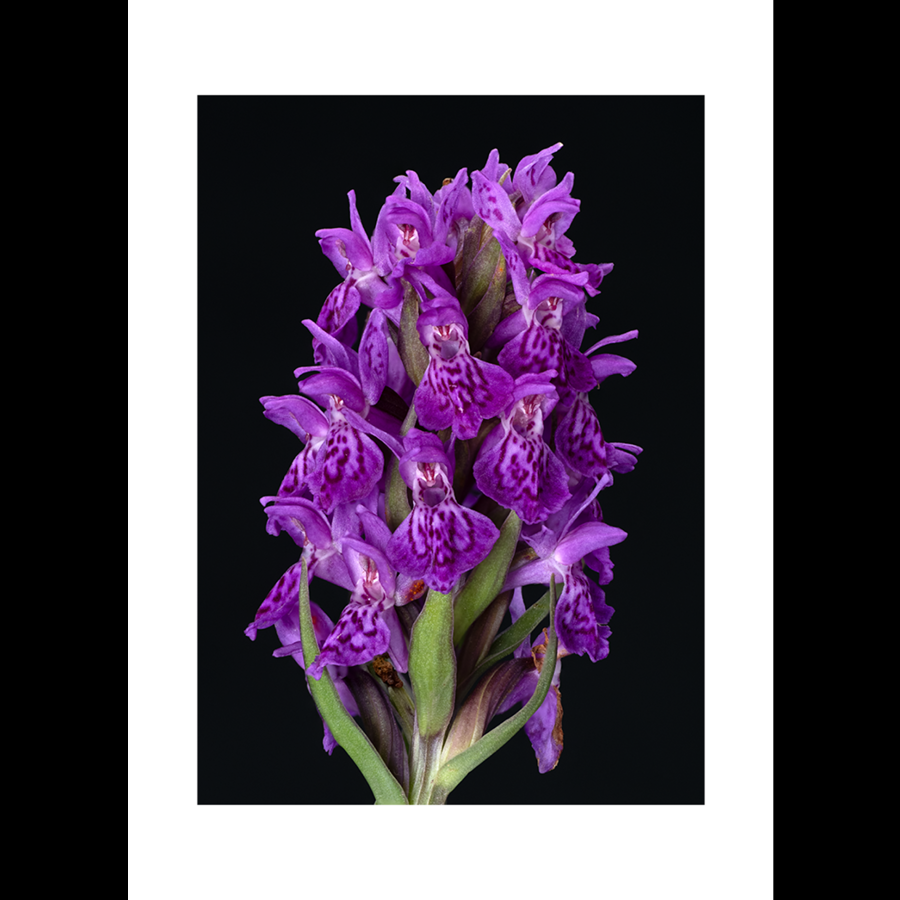 Image 1 of 1
Image 1 of 1


Field Marsh Orchid Card
The Broad-leaved marsh orchid has crafted a remarkable survival strategy by evolving intricate flower shapes and patterns that effectively draw in local pollinators. This plant cleverly mimics the look and scent of nectar-producing flowers to attract insects. As a result, it enhances pollination and saves energy by minimising nectar production. Its vibrant purple-pink blooms and sweet fragrance create the illusion of a flower rich in nectar, causing bees and other pollinators to land and try to feed, inadvertently transferring pollen.
Beyond its native wetland environments, this adaptable orchid has made a home in post-industrial landscapes. It flourishes in "brownfield" sites with heavy, clay-rich soils, colonising abandoned quarries, old railway lines, and the central reservations of dual carriageways. These previously industrial areas often offer the disturbed, nutrient-poor conditions favoured by marsh orchids, positioning them as vital pioneers for ecological restoration.
The Broad-leaved marsh orchid has crafted a remarkable survival strategy by evolving intricate flower shapes and patterns that effectively draw in local pollinators. This plant cleverly mimics the look and scent of nectar-producing flowers to attract insects. As a result, it enhances pollination and saves energy by minimising nectar production. Its vibrant purple-pink blooms and sweet fragrance create the illusion of a flower rich in nectar, causing bees and other pollinators to land and try to feed, inadvertently transferring pollen.
Beyond its native wetland environments, this adaptable orchid has made a home in post-industrial landscapes. It flourishes in "brownfield" sites with heavy, clay-rich soils, colonising abandoned quarries, old railway lines, and the central reservations of dual carriageways. These previously industrial areas often offer the disturbed, nutrient-poor conditions favoured by marsh orchids, positioning them as vital pioneers for ecological restoration.